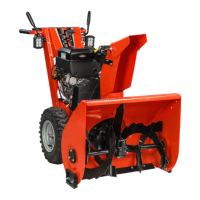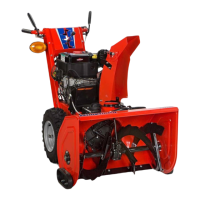Why won't my Simplicity Snow Blower engine start?
- JJeffrey BowmanJul 28, 2025
If your Simplicity Snow Blower's engine won't start, there are several potential causes. First, ensure the key is installed and turned to the ON position. If the engine is cold, try pressing the primer button twice. Also, check that the fuel shut-off valve is in the OPEN position and that the fuel tank isn't empty – fill it with clean fuel if necessary. For a cold engine, make sure the choke is in the CLOSED/START position. Finally, if the engine is flooded, set the choke to the OPEN/RUN position, move the throttle to FAST (if equipped), and crank the engine until it starts.






